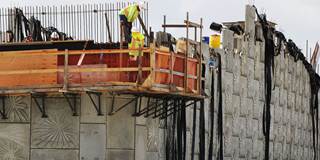It is time for Asia’s leaders to recognize that the lack of private funding for infrastructure projects cannot be reduced to one or even two problems – and develop comprehensive solutions that account for the full scope of the challenge. This requires, first and foremost, redefining infrastructure as a new asset class.
BEIJING – After several months of disappointing economic indicators, China’s State Council has unveiled a “mini-stimulus” package, focused on social-housing construction and railway expansion. The decision came a month after Premier Li Keqiang’s declaration that China had set its annual growth target at “around 7.5%” – the same as last year’s goal. The implication is clear: While consumption-driven growth remains a long-term goal for China, infrastructure will continue – at least in the short term – to serve as a key driver of China’s economy.

BEIJING – After several months of disappointing economic indicators, China’s State Council has unveiled a “mini-stimulus” package, focused on social-housing construction and railway expansion. The decision came a month after Premier Li Keqiang’s declaration that China had set its annual growth target at “around 7.5%” – the same as last year’s goal. The implication is clear: While consumption-driven growth remains a long-term goal for China, infrastructure will continue – at least in the short term – to serve as a key driver of China’s economy.